Inside Microsoft's Xbox 360
by Anand Lal Shimpi, Kristopher Kubicki & Tuan Nguyen on November 16, 2005 5:09 AM EST- Posted in
- Systems
Removing the Outer Shell
The first step is to remove the outer plastic shell that conceals the innards of the system. To do this, you must start by removing the face plate. Take a look at the front of the Xbox 360 and insert your thumb into the door that covers the two USB ports on the right of the unit. With your other hand squeezing the upper and lower sides of the face plate, pull out the face plate with your thumb. With not much force, the face plate should pop right off.
After the face plate has been pulled off you will see a silver Microsoft sticker covering a gap; remove this. You will also see four small clips locking the top half of the plastic shell to the bottom half. Do not attempt to wedge the clips out at this point.
With some care, gently bend outwards, the right gray ventilation shield on the right side of the unit so that you can see a bit inside. You will notice that the gray side piece attaches to both the bottom and top white chassis. Now look through the holes on top of the unit to locate the areas where the gray side pieces attaches to the white body. What you need to do is take the long but thin metal stick and push down, through the white holes (located on both the top and bottom of the Xbox 360) where the clips of the gray side pieces connect. Slowly pull out the gray pieces away from the unit while unlocking the clips and eventually the gray piece will release itself.
To remove the left gray piece, you must first remove the hard drive unit by pressing the button located on the unit itself. Then apply the same procedure used to remove the right gray ventilation piece -- except when you reach the bottom clip of the piece, you most remove the rubber feet located directly below, to reveal a hole where you can insert the metal stick.
Once you have both side gray pieces removed, you have essentially removed the main locking mechanism that holds the top and bottom shells together. At this point, return to the front of the unit and turn the entire unit upside down. Using a flat head screw driver or wedge, gently pry up the 4 clips holding the top shell to the bottom. Once the clips are unlatched, slowly lift up the front of the bottom shell about an inch.
The last step to removing the bottom shell cover is to insert a thin and small plastic stick into the thin rectangular holes on the rear. The reason the front of the bottom shell needs to be lifted is to prevent the rear latches from reattaching themselves. Slowly insert the stick into each rectangular opening. You should hear a click sound for each clamp you unlatch. Once complete, you may lift off the bottom shell covering.
Looking inside the unit, you will notice that there are 14 silver screws (6 of which are long) and 8 black screws. Using your torx screw drivers, remove the silver screws using a size T12 screw driver and the black ones using a size T7. Once you have all the screws removed, flip the Xbox 360 right side up and lift up the top plastic shell. You should now be greeted with the internals of the Xbox 360.


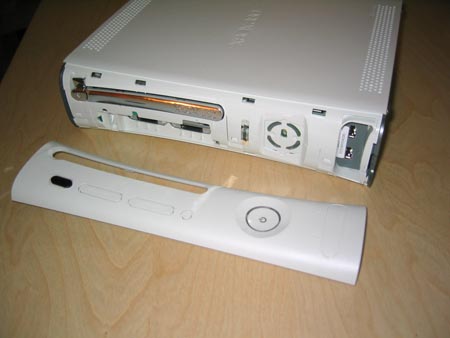

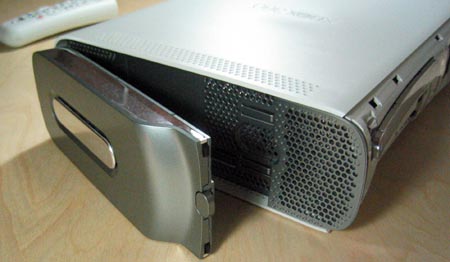
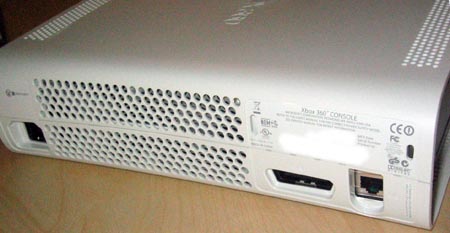
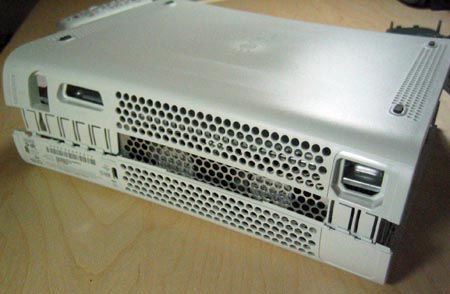
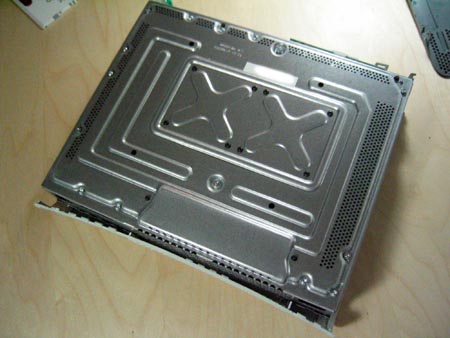









91 Comments
View All Comments
apriest - Wednesday, November 16, 2005 - link
HD gaming, but no DVI or HDMI?!! Shame, shame Microsoft...Coherence - Wednesday, November 16, 2005 - link
Agreed. I was very surprised to see that DVI/HDMI was left out of the first production run. My HDTV has all its component video inputs used up already, so it would have been nice to plug the 360 into one of the spare HDMI ports. I hate using switchboxes, but that's what I'll have to do with the component inputs now.glennpratt - Wednesday, November 16, 2005 - link
Does you HDTV have VGA? Thier is a VGA out.apriest - Thursday, November 17, 2005 - link
VGA (analog) isn't nearly the quality of DVI (digital), though it would be better than component.JarredWalton - Wednesday, November 16, 2005 - link
My Toshiba HDTV has an HDMI port (no DVI, but a DVI to HDMI cable works). However, it also has two component inputs, and that's far more common than DVI, HDMI, or VGA inputs on HDTVs.cruzer - Wednesday, November 16, 2005 - link
Very slick design, looking forward to getting one!!cruzer - Wednesday, November 16, 2005 - link
On page 5, "two dice on the chip", should that be 'dies' instead of 'dice'?cruzer - Wednesday, November 16, 2005 - link
Nevermind, dice is correct.apriest - Wednesday, November 16, 2005 - link
I was wondering that myself until I looked it up!bldckstark - Wednesday, November 16, 2005 - link
Two dies as in tooling dies, are not referred to as dice. Dies is the correct word. The same applies to computer mouses. The plural for computer mouse is not computer mice, but computer mouses. Mice is a group of more than one animal, not more than one tool. I have thousands of dies here at work, and have worked around millions of dies, never once has anyone even suggested the use of the word dice for them.From dictionary.com -->
die2 pl. dies or dice (ds)
1. pl. dies - A device used for cutting out, forming, or stamping material, especially:
1. An engraved metal piece used for impressing a design onto a softer metal, as in coining money.
2. One of several component pieces that are fitted into a diestock to cut threads on screws or bolts.
3. A part on a machine that punches shaped holes in, cuts, or forms sheet metal, cardboard, or other stock.
4. A metal block containing small conical holes through which plastic, metal, or other ductile material is extruded or drawn.
2. pl. dies Architecture. The dado of a pedestal, especially when cube-shaped.
3. pl. dice
1. A small cube marked on each side with from one to six dots, usually used in pairs in gambling and in various other games.
2. dice (used with a sing. verb) A game of chance using dice.
tr.v. died, die·ing, dies
To cut, form, or stamp with or as if with a die.
I don't care if AT gets it right or not as long as I can understand what they mean, but if we are going to discuss it, let's make sure we are correct.